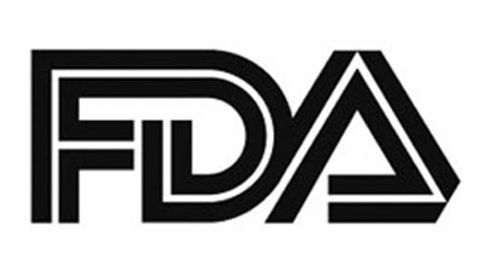FDA Grants Priority Review to BLA for Adjuvant Atezolizumab in PD-L1+ NSCLC
The FDA has accepted the supplemental biologics license application submitted for atezolizumab as adjuvant treatment following surgery and platinum-based chemotherapy for people with non-small cell lung cancer whose tumors express PD-L1≥1%, as determined by an FDA-approved test and granted it priority review.

The FDA has accepted the supplemental biologics license application (sBLA) submitted for atezolizumab (Tecentriq) as adjuvant treatment following surgery and platinum-based chemotherapy for people with non-small cell lung cancer (NSCLC) whose tumors express PD-L1≥1%, as determined by an FDA-approved test and granted it priority review, according to a press release from Genentech.1
Atezolizumab’s sBLA is supported by findings from the phase 2 IMpower010 study (NCT02486718), a study in which adjuvant atezolizumab achieved disease-free survival improvement in patients with early-stage resected NSCLC per investigator assessment, achieving the primary end point of the study.1,2
IMpower010 included patients with completely resected tumors, stage IB-IIIA disease, and an ECOG performance status 0-1. Overall, the study enrolled1280 patients, and of those 1269 patients were treated with up to four 21-day cycles of cisplatin-based chemotherapy in combination with pemetrexed, docetaxel, gemcitabine, or vinorelbine. One to one randomized subsequently occurred for these 1,269 patients to arms of either adjuvant atezolizumab administered at 1200 mg every 3 weeks for up to 16 cycles or best supportive care (BSC).2
In addition to investigator-assessed DFS, patients were evaluated for multiple secondary end point including; overall survival (OS), the percentage of patients who are disease-free at the 3-year and 5-year time points, DFS within selected populations, the number of patients with adverse events (AEs), the percentage of participants with anti-therapeutic antibodies to atezolizumab, maximum plasma concentration of atezolizumab, and minimum serum concentration of atezolizumab.
At a median follow-up was 32.2 months in the ITT population, the 24-month DFS rate was 74.6% in the atezolizumab arm compared with 60.0% in the BSC arm. At 36-months, the DFS rate was 61.0% with adjuvant atezolizumab compared with 48.2%. The median DFS was not evaluable (NE, 95% CI, 36.1-NE) in the atezolizumab arm versus 35.3 months (95% CI, 29.0-NE) in the BSC arm (stratified HR, 0.66; 95% CI, 0.50-0.88; P =.0004).
Baseline characteristics were balanced between the 2 treatment arms. Investigators assessed DFS across subgroup populations and found that most groups favored adjuvant atezolizumab over BSC, especially patients with PD-L1 expression. Those with an SP263 PD-L1 status ≥ 50% benefitted from adjuvant atezolizumab over BSC (HR, 0.43; 95% CI, 0.27-0.65), as did those with a status of ≥ 1% (HR, 0.66; 95% CI, 0.49-0.87), and those with a status of <1% (HR, 0.97; 95% CI, 0.72-1.31).
In contrast, those who were positive for ALK rearrangement favored BSC over atezolizumab (HR, 1.04; 95% CI, 0.38-2.90), and those who had never smoked (HR, 1.13; 95% CI, 0.77-1.67).
OS data were immature at the time of the analysis, but there was a trend toward OS improvement identified in the subgroups of patients with ≥ 1% PD-L1 expression (HR, 0.77; 95% CI, 0.;51-1.77).
AEs of any cause were observed in 92.7% of the atezolizumab-treated patients compared with 70/7% of the BSC-treated patients. These AEs were grade 3 to 4 in severity for 21./8% of the atezolizumab arm compared with 11.5% of the control arm, and atezolizumab treatment also led to treatment-related grade 3/4 AEs in 10.7% of patients. Serious AEs were seen in 17.6% of the atezolizumab arm compared with 8.5% of the control arm, and grade 5 AEs occurred in 8 patients and 3 patients, respectively.
Among the atezolizumab-treated population, dose interruptions occurred in 28.7% and treatment discontinuation occurred in 18.2% of patients. In both arm, there were immune-mediated AEs observed including in 51.7% of the atezolizumab arm versus 9.5% of the BSC arm. Immune-mediated AEs were grade 3/4 for 7.9% of the experimental arm compared with 0.6% of the control arm. Overall, the safety data for atezolizumab in this analysis were consistent with its known safety profile. No new safety signals were identified during IMpower010.
References:
1. FDA Grants priority review to Genentech’s Tecentriq as adjuvant treatment for certain people with early non-small cell lung cancer. News release. Genentech. August 2, 2021. Accessed August 2, 2021. https://bit.ly/3rUUsJF
2. Wakelee HA, Altorki NK, Zhou C, et al. IMpower010: Primary results of a phase III global study of atezolizumab versus best supportive care after adjuvant chemotherapy in resected stage IB-IIIA non-small cell lung cancer (NSCLC). J Clin Oncol. 2021; 39 (suppl 15: abstr 8500). doi: 10.1200/JCO.2021.39.15_suppl.8500